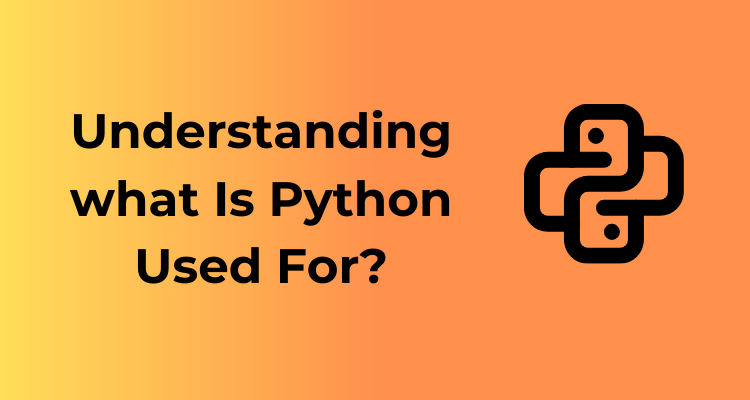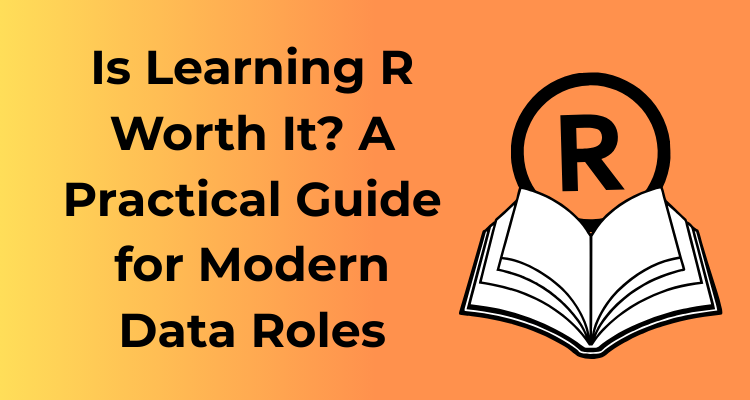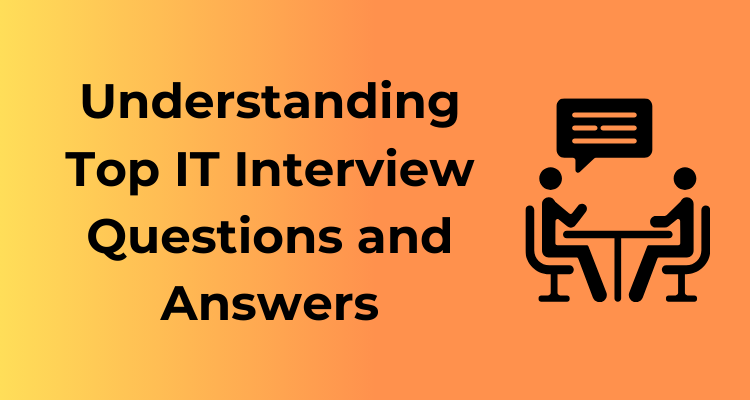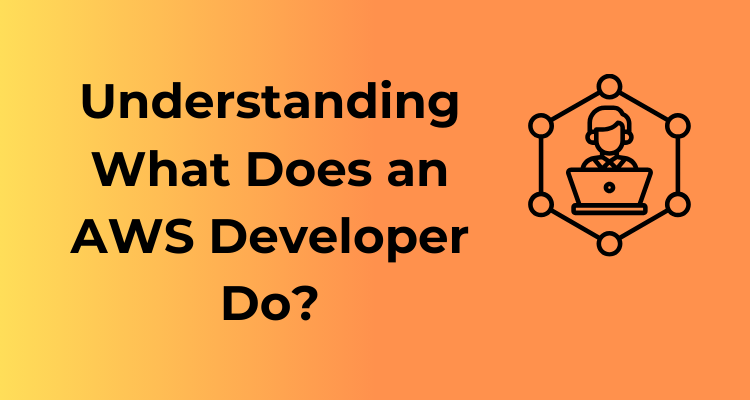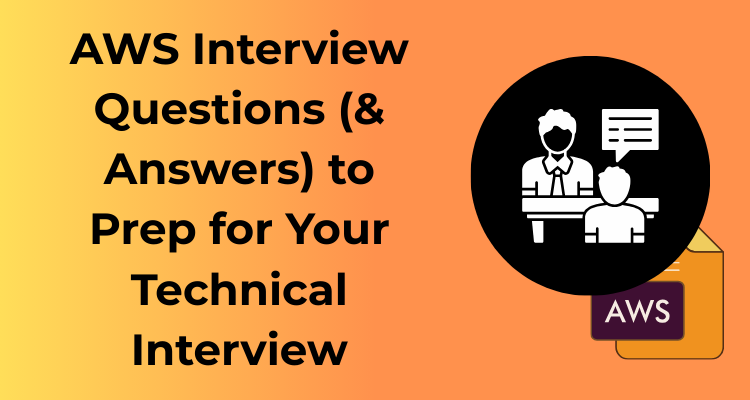The MERN stack is like a powerful superhero squad for full-stack development, and understanding each member of the team will make your learning journey much smoother. Let’s break down the MERN acronym: MongoDB, Express.js, React.js, and Node.js. Each plays a vital role, and together, they create a seamless environment for building dynamic, data-driven web applications.

1. MongoDB – Your NoSQL Database Sidekick
Think of MongoDB as the database that stores your application’s data in a flexible, JSON-like format. It’s here to manage all your data without the complex structure of traditional SQL databases. As a NoSQL database, MongoDB helps you keep things fast and adaptable, perfect for modern web apps.
2. Express.js – The Backbone of Your Backend
Next up is Express.js, a lightweight yet powerful framework for handling backend processes. Running on Node.js, Express.js makes managing routing, middleware, and server logic feel like second nature. It’s like the glue that connects the data from MongoDB to your application.
3. React.js – Your Frontend Powerhouse
If you want your app to look sleek and perform beautifully, React.js is the tool to master. Built by Facebook, React is a JavaScript library that makes creating interactive UIs fun and efficient. The modular component system means you can build reusable elements, speeding up development without compromising creativity.
4. Node.js – The Engine Powering Your Application
Node.js ensures that everything under the hood runs smoothly. It’s a runtime environment for executing JavaScript on the server side. In short, Node enables you to handle requests, connect to databases, and serve data to users—all using one programming language: JavaScript.
Why Should You Care About MERN as a Stack?
The beauty of MERN lies in its all-in-one JavaScript environment. With just one language, you can bring your frontend, backend, and database all together, eliminating the need to juggle multiple languages. This makes development faster and less overwhelming, especially for beginners. On top of that, MERN is widely used in the industry, meaning the skills you learn are in high demand!
How to Approach the “Understanding” Phase?
- Start Small: Begin by focusing on one component at a time. For instance, learn the basics of React before tackling backend concepts.
- Practice as You Go: Build mini-projects, such as a to-do app or a blog. This hands-on experience reinforces what you learn in a practical way.
- Understand the Integration: Once you’re comfortable with individual parts, dive into how these technologies work together. Learn how data flows from MongoDB to React through Node and Express.
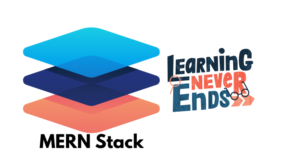
Time Commitment: How Much Effort Will You Need to Learn MERN?
So, you’re considering diving into the world of MERN Stack? Great choice! Now, one of the first questions that probably popped into your mind is: “How much time will this actually take?” Let’s break it down realistically so you can plan accordingly.
Learning MERN Isn’t a Sprint, But a Manageable Marathon
The time commitment to learn the MERN Stack depends on several factors, including your prior experience, how much time you can dedicate per day, and your learning style. Whether you’re a complete beginner or someone already familiar with coding fundamentals, MERN does require consistent and focused effort.
What Does Learning the MERN Stack Entail?
MERN stands for MongoDB, Express.js, React, and Node.js. To learn it properly, you’ll need to invest time in each of these technologies, as well as how they integrate seamlessly into a full-stack application. The beauty is how each component supports the others, but tackling them all can take time.
Here’s a rough timeline (assuming a few hours of focused learning each day):
- Basics of JavaScript: If you’re not already familiar, learning JavaScript fundamentals will take 2-4 weeks.
- Frontend with React: Building a strong foundation with React could take you 4-6 weeks.
- Node.js and Express.js: Once React feels comfortable, you’ll spend about 4 weeks learning backend essentials.
- MongoDB: Understanding databases and how to interact with them could take an additional 2-3 weeks.
- Integration and Building a Full-Stack App: Finally, putting everything together can take another 3-4 weeks, depending on project complexity.
Altogether, you’re looking at about 3-6 months of dedicated learning to become comfortable with MERN, assuming you’re learning part-time while balancing other responsibilities.
Part-Time vs. Full-Time Learning
Not everyone can drop everything to learn a new tech stack, so it’s important to evaluate your time. If you’re learning part-time—1-2 hours a day—you can make steady progress, but the journey will likely take closer to six months. On the flip side, if you dive in full-time, dedicating 4-6 hours daily, you could significantly cut that timeline, possibly mastering the basics in as little as two to three months.
Your Learning Curve and Prior Experience
If you already have experience with JavaScript or have a background in software development, the MERN learning curve will feel far less daunting. However, if you’re completely new to tech, be prepared to spend more time on the foundational elements—like learning JavaScript syntax and problem-solving—before jumping into advanced concepts.
Making Time Work for You
Consistency is your best friend here. A little progress every day really adds up. Create a schedule that works with your lifestyle, and stick to it. Feeling overwhelmed? Break it into small, digestible goals. For instance:
- Dedicate Week 1 to setting up your environment and learning basic JavaScript.
- Allocate specific weeks to React, Node.js, and MongoDB individually.
- Spend weekends practicing small projects or solving coding challenges.
A Note on Realistic Expectations
While you might be eager to whip up professional-grade MERN apps in no time (we get it!), remember that mastery takes patience. Set realistic benchmarks for yourself—such as completing a basic React app in your first month or deploying your first full-stack app within three months. Celebrate the small wins; they’ll keep you motivated!
Key Skills You Need Before Diving Into the MERN Stack
So, you’re ready to level up and learn the MERN stack? That’s absolutely awesome! But hold on a moment — before you dive in, let’s make sure your skillset is ready for a smooth learning experience. In this section, we’ll discuss some foundational skills you’ll need to feel confident as you tackle this powerful framework. Don’t worry, it’s not as overwhelming as it might seem!
1. A Solid Understanding of HTML, CSS, and JavaScript
First and foremost, make sure you’ve got the big three basics down pat: HTML, CSS, and JavaScript. These are the building blocks of web development, and they’ll pave the way for everything else. Here’s a quick breakdown:
- HTML: Think of this as the skeleton of a webpage. You’ll use it to structure your content.
- CSS: CSS is the skin, clothes, and styles. You’ll lean on this to make your web apps look sleek and professional.
- JavaScript (JS): This one’s the brain. It powers interactivity — think of features like dynamic menus or interactive forms.
If you’re not comfortable with these yet, it’s okay to take a step back and practice. You’ll thank yourself later!
2. Comfort with JavaScript ES6+ Features
Once you’re familiar with JavaScript, you’ll need to step it up a notch. Modern JavaScript (commonly ES6 and beyond) introduces features like arrow functions, destructuring, spread/rest operators, and promises/async-await, which are integral to MERN development. You’ll encounter these a lot when working with React in particular!
Don’t be intimidated — you don’t need to master all of these perfectly, but a working knowledge will go a long way.
3. Version Control: Learning Git
Okay, confession time: no developer journey is complete without understanding Git. It’s a version control system that tracks changes to your code. Not only does this protect your work, but it also allows collaboration with other developers (an essential skill when working in teams).
Don’t worry — you don’t need to be a Git guru. Just focus on basics like creating repositories, committing your work, and pushing it to platforms like GitHub.
4. Familiarity with the DOM and Basic APIs
The Document Object Model (DOM) is the heart of how JavaScript interacts with web pages. You should know how to use JavaScript to manipulate HTML elements and handle user events (like button clicks). Additionally, learning some basic APIs — like the fetch() API for making HTTP requests — will be valuable when working with MongoDB or external data sources.
5. Basic Understanding of Programming Fundamentals
If you’re jumping into the MERN stack, it’s important to have a firm grasp of general programming concepts. Things like variables, loops, functions, and data structures (arrays, objects, etc.) are non-negotiable tools in your coding toolbox. Luckily, these apply across almost all programming languages, so time spent learning them is never wasted.
6. Problem-Solving and Debugging Mindset
Lastly, and perhaps most importantly, bring along a problem-solving attitude. Debugging and figuring out why things broke (yes, they will break!) is a skill in and of itself. Don’t be afraid to use resources like browser developer tools, error messages, or even a trusty Google search — everyone does it, even seasoned developers.
Ready to Take the Leap?
If you’ve nodded along while reading these skills or if you’re ready to fill in the gaps, great! Having a strong foundation will make learning the MERN stack far less intimidating. It’s like preparing your tools before building a house — a little prep work pays off exponentially when things get tougher.
Keep these skills in mind, roll up your sleeves, and get ready to take on the exciting world of MERN development. You’ve got this!
Essential Tools and Resources to Kick Off Your MERN Stack Learning
Diving into the MERN stack can feel a bit daunting at first, but with the right tools and resources, you’ll set yourself up for success. The MERN stack relies on MongoDB, Express, React, and Node.js, so it’s helpful to align your learning tools around these technologies. Here, I’ll outline a friendly guide to tools and resources you’ll be glad to have at your fingertips.
1. The Tools You’ll Need
Before you begin, let’s gather some essential software to streamline your learning journey:
- Code Editor: A solid code editor like Visual Studio Code (VS Code) is invaluable. It’s free, lightweight, and packed with extensions tailored for development with the MERN stack. For instance, install helpful extensions like Prettier for code formatting and ESLint for linting.
- Terminal: Whether you’re on Mac (Terminal), Windows (Command Prompt or PowerShell), or Linux, knowing how to use the terminal is a must. Alternatively, consider using Windows Subsystem for Linux (WSL) for a more Unix-like experience if you’re on Windows.
- Git: Version control is your best friend. Install Git and learn basic Git commands like
clone,push, andpullto manage and collaborate on projects efficiently. - Node.js and npm: Install the latest LTS version of Node.js. With Node.js comes npm (Node Package Manager), which is critical for installing libraries and dependencies.
- Database Tool: Work with a database GUI like MongoDB Compass for visual interaction with databases, or install MongoDB Atlas to manage your database in the cloud.
2. Online Learning Platforms and Tutorials
The beauty of learning MERN today is the sheer wealth of resources available. Here are the top online platforms to help you master each stack component:
- FreeCodeCamp: A great free resource covering JavaScript basics all the way to React and MongoDB. Their interactive coding exercises make learning hands-on.
- YouTube Channels: Popular channels like Traversy Media and The Net Ninja have clear and engaging MERN tutorials. Start with introductory playlists before tackling full-stack projects.
- Udemy and Coursera: If you’re ready to invest a bit, platforms like Udemy often have discounted comprehensive MERN Stack courses with step-by-step guidance.
- Documentation: Make a habit of browsing official documentation for each tool (e.g., MongoDB, Express.js, React, Node.js). While it may seem challenging at first, understanding official docs is a valuable skill.
3. Community Support and Forums
When you’re stuck (we all get stuck!), turning to a community can be a lifesaver:
- Stack Overflow: Search questions or post your own if you’re stuck on a weird error or functionality.
- Reddit & Discord: Subreddits like r/webdev or servers dedicated to web development offer friendly discussion and timely advice.
- GitHub: Look for open-source MERN projects to explore coding practices and contribute. This hands-on experience is invaluable for deeper understanding.
4. Practice With Starter Projects
Once you’re armed with tools and learning materials, it’s important to apply what you’ve learned. Use beginner-friendly project ideas like:
- To-Do App
- Weather Dashboard
- Basic Social Media Feed
Not only do these projects strengthen your skills, but they also give you something tangible to showcase in your portfolio.
5. Stay Organized
Finally, stay organized! Use task management apps like Trello or Notion to track your progress. Break your learning into small milestones, celebrate achievements, and push yourself to consistently build and refine projects.
Common Challenges When Learning MERN and How to Overcome Them
Let’s talk about an inevitable part of any learning journey: challenges. Diving into the MERN stack (MongoDB, Express.js, React, and Node.js) is no exception. But don’t worry! Facing hurdles doesn’t mean you’re doing it wrong – it’s proof that you’re making progress. Here’s a look at some common challenges learners face when tackling the MERN stack and practical advice to navigate them like a pro.
1. Feeling Overwhelmed By Too Many Technologies
One of the first roadblocks people encounter is the feeling of being overwhelmed. Let’s face it – MERN isn’t just one skill. It’s a combination of four different but interconnected technologies. You might feel like you’re juggling too many plates at once.
Solution: Break the stack into manageable pieces and tackle them one at a time. Start with JavaScript fundamentals since it’s the backbone of the stack. Once that feels more comfortable, pick one technology to focus on first – say React for front-end development or Node.js for the back-end. Remember, you don’t need to master everything all at once.
2. Debugging – Oh, The Headaches!
Errors and bugs are an unavoidable part of coding. When working with MERN, you’re effectively debugging across multiple layers (database, server, client, etc.), which can get frustrating fast.
Solution: Develop strong debugging skills from the beginning. Use browser tools like Chrome DevTools for front-end debugging and tools like Postman for testing your APIs. Make it a habit to log errors to the console using tools like console.log or more advanced libraries like winston. And don’t sleep on error messages – they often guide you to the problem if you’re patient and attentive!
3. Understanding the Big Picture
When working with the MERN stack, it can be tricky to see how all the pieces fit together. For instance, you might be able to create a React component, but how does that connect to the back-end? Where does MongoDB come into the picture? It’s easy to feel disconnected.
Solution: Try building small projects early in your learning journey. For instance, create a simple to-do list app with MongoDB storing tasks, Express.js handling routes, React managing the UI, and Node.js as the server. This way, you’ll start seeing how each component communicates with the others. Visualizing these interactions is key!
4. Managing Time and Motivation
Learning the MERN stack isn’t a one-week task. It requires patience, consistency, and lots of practice. Along the way, it’s normal to lose motivation, especially when progress seems slow.
Solution: Break your learning into short-term, achievable goals. Instead of telling yourself, “I’m going to master MERN this year,” say, “This week, I’ll build a basic API with Express.” Celebrate small wins! Also, find a community. Whether it’s through online forums, Discord groups, or local meetups, sharing your challenges and wins with others can give you a much-needed motivational boost.
5. Handling Real-Time Data
Handling real-time data (e.g., chat apps or live updates) is one area where many learners struggle. You might run into issues like data not updating smoothly or synchronization problems.
Solution: When building real-time applications, start small. Experiment with tools like Socket.IO to implement basic real-time functionality. Learn how WebSockets work and practice setting up simple use cases like notifications. Once you grasp the fundamentals, scaling up will feel much less intimidating.
Practical Steps to Build Your First MERN Stack Project
Alright, you’ve learned the foundational skills, explored the MERN components (MongoDB, Express, React, and Node.js), and perhaps even navigated a few tutorials. But let’s be real – the best way to truly grasp the MERN stack is by diving in and building something. Creating your first project might feel overwhelming, but don’t worry; I’m here to guide you through the process step by step. Let’s get started!
Step 1: Plan Your Project
The first step is to choose a project idea. It doesn’t have to be groundbreaking — start small and pick something that excites you. Examples of beginner-friendly MERN projects could be:
- A to-do list app
- A simple blog platform
- A movie database where users can browse and save their favorite films
Once you have an idea, sketch out the features. Don’t overcomplicate it! Remember, the goal is to get hands-on experience, not to build the next Facebook right away.
Step 2: Set Up Your Environment
Before coding, you need to set up your development environment. Here’s a quick rundown:
- Code Editor: Install a great code editor like Visual Studio Code.
- Node.js: Ensure you have Node.js installed as it’s the backbone for your server and npm (Node Package Manager).
- MongoDB: Use a cloud-hosted MongoDB like MongoDB Atlas or set it up locally.
Setting up can feel like a hurdle, but trust me — getting this right will save you countless headaches later on.
Step 3: Start With the Backend (Node.js and Express)
Begin by setting up a simple server using Node.js and Express. Your first endpoint might look like this:
const express = require('express');
const app = express();
const port = 3000;
app.get(‘/’, (req, res) => {
res.send(‘Hello World!’);
});
app.listen(port, () => {
console.log(`Server running at http://localhost:${port}`);
});
Run your server and visit http://localhost:3000. If you see “Hello World!”, congratulations — your backend is live!
Step 4: Connect to MongoDB
Next, set up your MongoDB connection. Use the official MongoDB Node.js driver or an ORM like Mongoose. Create a schema and try inserting and retrieving some initial data. Once your database is connected, your project has liftoff!
Step 5: Build the Frontend (React)
React is where the magic happens for your app’s user interface. Use npx create-react-app to scaffold your React app. Start by building simple components and connecting them with the backend to fetch and display data. For example, a to-do list could retrieve tasks from your MongoDB backend and display them dynamically.
Step 6: Pull It All Together
This is when everything clicks! Add interactions — like form submissions for creating new items or buttons for deleting items. Use API calls (through axios or the Fetch API) to communicate between the frontend and backend. Seeing your app come to life is a rewarding feeling.
Step 7: Deploy Your App
Once built, you can show off your work by deploying it. Frontend hosting options include Vercel or Netlify. For the backend and database, consider platforms like Heroku or Render.
Setting a Roadmap: From Beginner to Proficiency in the MERN Stack
Learning the MERN stack is like embarking on an adventurous road trip. You’ve got to plan your stops, pace yourself, pick up supplies, and enjoy the ride. Let’s map out your journey from a fresh-faced beginner to a confident MERN stack developer, step by step.
Start with the Basics: Building a Strong Foundation
Everything rests on a solid foundation, so your first milestone on this roadmap is understanding the building blocks of the MERN stack. Here’s how:
- MongoDB: Start by learning the fundamentals of databases. Dive into MongoDB’s document-based structure and understand basic CRUD operations (Create, Read, Update, Delete).
- Express.js: Learn how to create a backend server. Start small by handling HTTP requests and responses.
- React.js: Master the basics of building functional user interfaces (UIs) using React components, JSX, and state management.
- Node.js: Get comfortable writing JavaScript on the backend. Understand core Node.js concepts like modules, asynchronous programming, and event loops.
Tip: Dedicate 2-3 weeks per technology for beginners. Take one step at a time, and avoid being overwhelmed by trying to learn everything all at once!
Set Small, Achievable Goals
Nobody becomes an expert overnight, so be kind to yourself. Break your MERN journey into bite-sized, practical goals:
- Build a basic “To-Do” app to get hands-on experience with full-stack development.
- Create a simple backend API that interacts with a MongoDB database.
- Design UIs in React with a focus on reusable components. Even small wins matter!
This approach keeps things manageable and gives you a sense of accomplishment after every small milestone.
Intermediate Phase: Deepen Your Skills
Once you’ve grasped the basics, it’s time to level up. Work on slightly more complex projects, like:
- Creating a user authentication system (think login and registration functionality).
- Building a blog or a simple e-commerce website, integrating frontend and backend seamlessly.
- Learning about state management tools like Redux or Context API to handle more complex UIs.
Focus on problem-solving and debugging during this phase—it’s a valuable skill that comes with practice.
Advance to Full-Stack Proficiency
Now that you’ve built smaller projects, aim for more robust, real-world applications. Here’s where you can push your limits:
- Optimize your code for performance and scalability.
- Learn advanced backend concepts—middleware, API security, and deployment.
- Experiment with additional tools like GraphQL, Docker, or WebSockets to complement your MERN stack knowledge.
- Contribute to open-source projects to test your skills in a collaborative environment. It’s a phenomenal way to level up!
This stage could take months (and even years) since learning never truly stops in web development.
Track Your Progress (and Celebrate Wins)
Throughout your journey, keep track of everything you’ve achieved. Document the projects you’ve built in a portfolio and update your resume with new skills. Celebrate every milestone, big or small—it keeps you motivated to keep learning.



